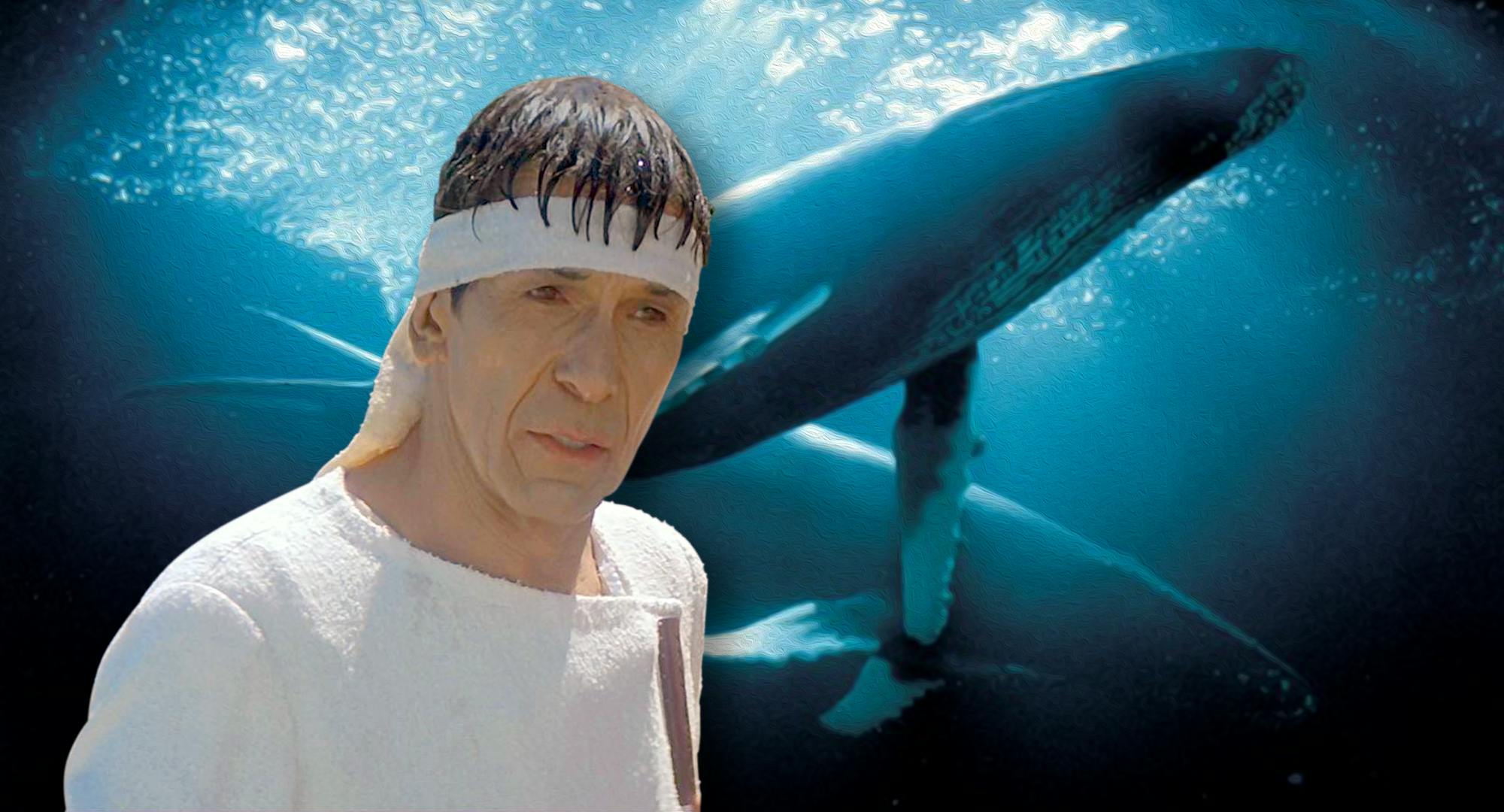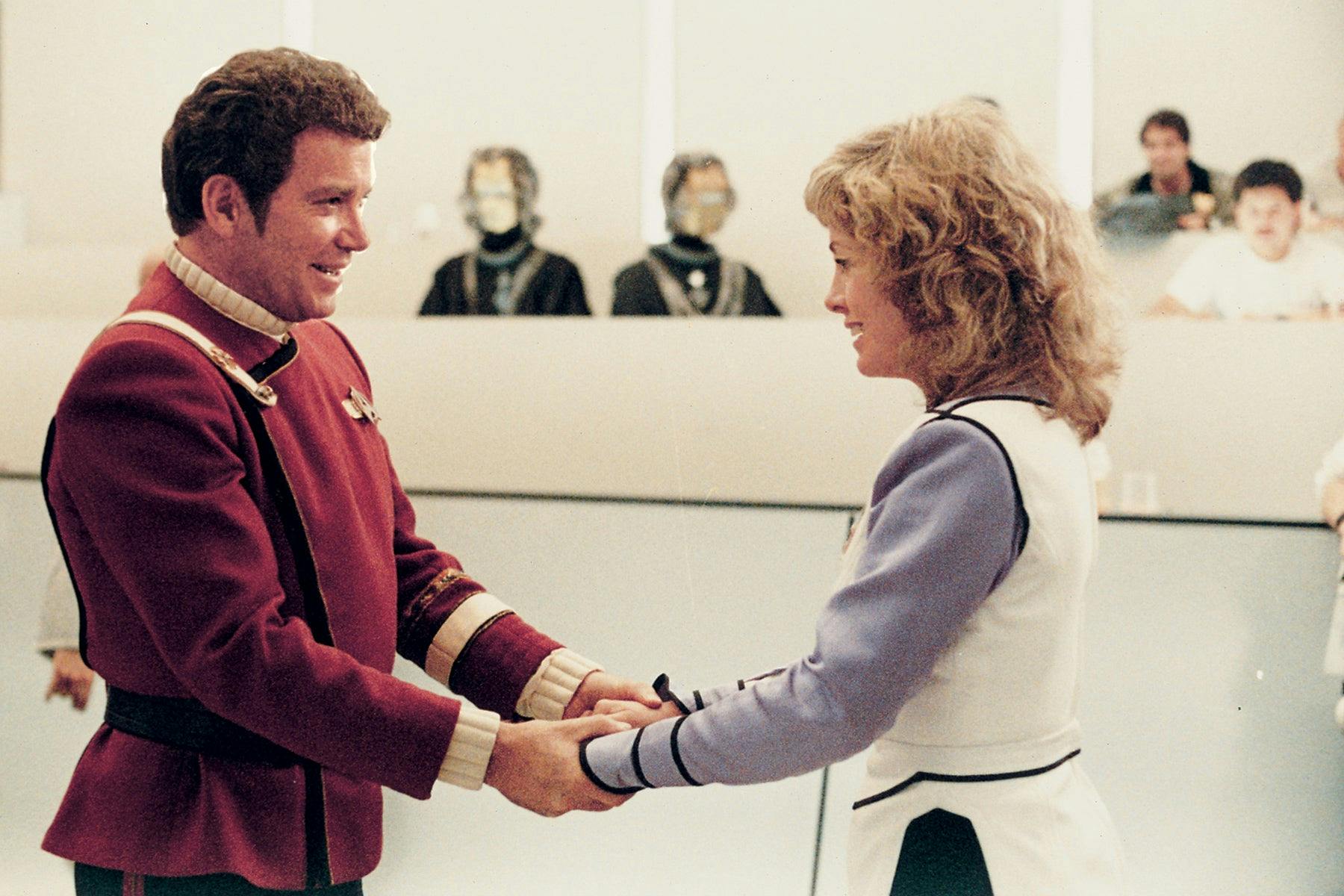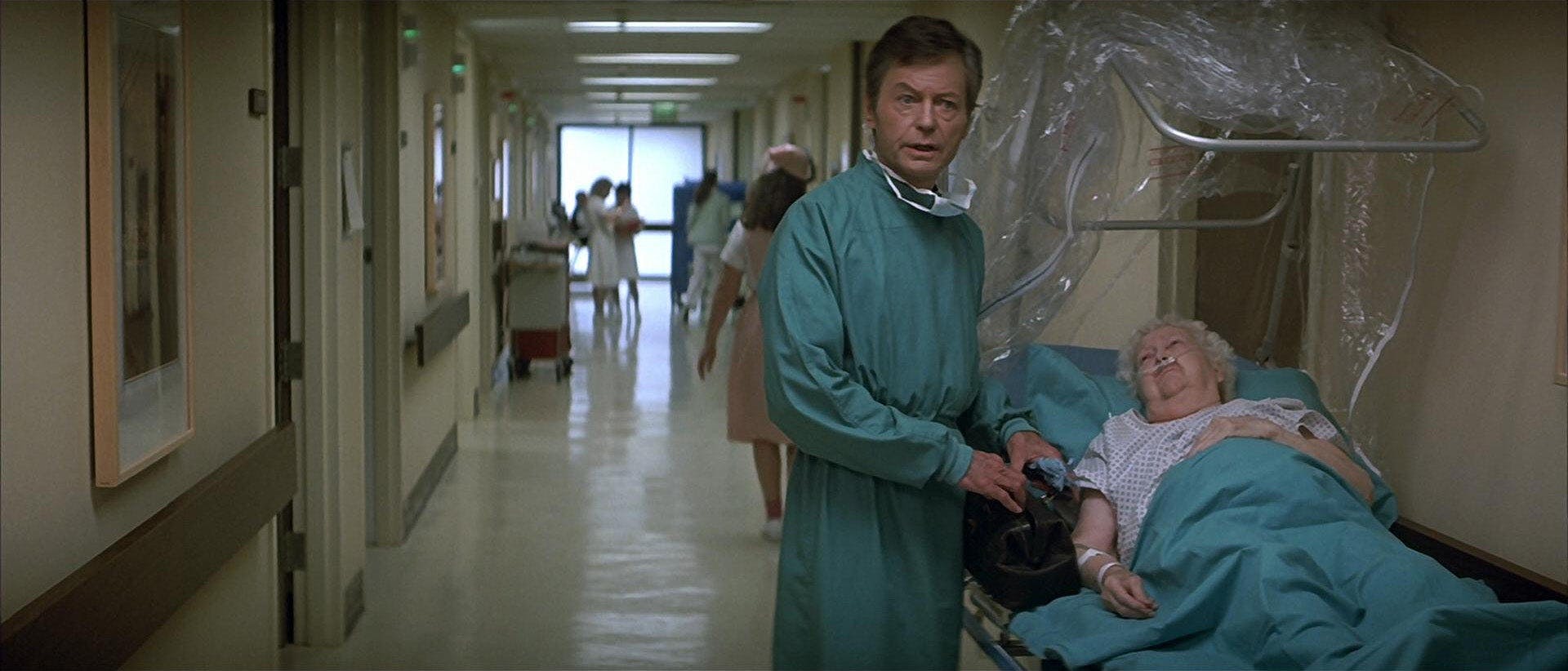Published Apr 22, 2020
The One About the Whales
For Earth Day 2020, a look back at one of our favorite movies.

StarTrek.com
“Everybody remember where we parked,” is not exactly the kind of line you think you’re going to get in a Star Trek movie. You might also not expect to see Spock swimming underwater with a humpback whale or Kirk inventively cursing out a cab driver in 1980s San Francisco. Star Trek IV: The Voyage Home is a wild ride, but really, it’s all about those whales.
Lately, I’ve found the movie to be very comforting, a sunny kind of balm in this new time of social distancing and uncertainty. With the fiftieth anniversary of Earth Day this month, The Voyage Home’s environmental philosophy is also particularly poignant. The message is a simple one of interconnectedness, that the extinction of one species affects every other species. There’s also a hospital chase scene and a legendary Punk on a Bus. In its humor and lightheartedness, sincerity and simplicity, Star Trek IV is the funny one, the quirky one, but also a reminder of what can be lost and the unexpected consequences along the way.

StarTrek.com
Released in 1986, The Voyage Home builds directly on the events of the previous two films in its opening, with Spock readjusting to life after being reborn on Genesis and the Enterprise crew preparing for an inglorious return to Starfleet after breaking all the rules to rescue him. Near Earth, the arrival of a mysterious probe of unknown origin wreaks havoc on Starfleet Command and the operations of the planet. On their way home in a jalopy of a Bird of Prey from Star Trek III, Kirk and company quickly piece together that the probe is trying to make contact with life forms on Earth—just not the life forms you’d expect.
The probe is trying to get in touch with humpback whales, except there are no more humpback whales on Earth in 2286. Recognizing that the giant space log isn’t going to stop until it hears some whale song, Kirk realizes that, naturally, time travel must be attempted. They will journey back to Earth of the past, before whales went extinct, and bring some back to their present time to communicate with and appease the massive space log. It’s a bonkers premise, but sublimely so in execution.
Environmentally themed movies today are still a bit of a niche category. But when Leonard Nimoy, William Shatner, and the Enterprise crew were suiting up for their fourth big-screen adventure, it had been little more than a decade since the passage of some of America’s most significant environmental legislation; things like the Clean Water Act the Endangered Species Act, and the 1970 formation of the EPA. Nimoy, pulling double duty as both director and co-star, had a strong vision for the film early on in the production process. Both he and producer Harve Bennett wanted to make what they termed a “nice” Star Trek movie, one free of villains and phaser fights. Paramount was on board, bringing Nimoy back to the directing chair for a second go-round after Star Trek III: The Search for Spock and fully investing in his environment-focused concepts for the movie.
Earth Day | Star Trek Cares for the Environment
An early story idea had not whales as the target of the probe, but the tiny snail darter — a fish roughly the length of two paper clips. It’d recently been discovered, and Bennett liked the very Star Trek-esque idea of something so small having such a big impact (as well as its potential for cost-savings in production). Humpback whales, though, were ultimately chosen. They’re grander and a better cinematic choice because of their size and elegance and distinctiveness from so many other sea creatures. They also play a critical role in the overall health of the marine ecosystem in their spot at the top of the oceanic food chain.
The vision of Nimoy and his co-creators was notable, especially compared to other studio films of the 1980s. What resulted was the both the least “Star Trek” Star Trek movie but also the most “Star Trek” Star Trek movie in terms of values and ethos. And it paid off, in Hollywood terms and for fans. The Voyage Home was the fifth-highest grossing movie of 1986 and remained the highest-grossing Star Trek film until 2009’s J.J. Abrams reboot. It earned four Academy Award nominations, including for its cinematography and score, and it remains a fan favorite, known more for its nickname than its official title.

StarTrek.com
Like Nimoy wanted, there are no phaser fights and no Klingons dropping out of cloak. The cast, free from bridge duty, shine in San Francisco subplots, providing forward action for the humpback search and also some of the best comedic moments in Star Trek (“Dialysis? My god, what is this, the Dark Ages?”). Uhura and Chekhov must find nuclear “wessels” to help repair the Bird of Prey but can’t find Alameda, while Dr. McCoy and Scotty go in search of whale tank materials and navigate a less-than-chatty desktop computer. Sulu seeks out a helicopter, leaving Kirk and Spock to play tourist at the Cetacean Institute, where they find humpback expert and Kirk-skeptic Dr. Gillian Taylor and two happy humpbacks, George and Gracie. Each sequence in IV contains the essence of Star Trek — teamwork, pursuit of the greater good, forward progress.
More than 30 years after Star Trek IV, and fifty years since the first Earth Day on April 22, 1970, forward progress is still the hope of so many. Around 20 million Americans took part in the inaugural Earth Day celebration, and the landmark legislation of the mid-1970s has proven vital. For instance, ninety-nine percent of the species protected by the Endangered Species Act of 1973 have been saved from extinction in the years since the law’s passage. Still, there is much progress yet to be made, even in the area of species conservation. Despite an international ban (instituted, ironically, in 1986), pockets of commercial whaling in places like Japan and Iceland persist. There are bright spots, though, and proof of the success of long-term conservation efforts: One distinct population of humpbacks (all originally classified as endangered under the ESA) has recently been starting to thrive once again.

StarTrek.com
Star Trek IV is a delightful exploration of that kind of forward-thinking hopefulness. It revels in both its un-Star Trek-ness and its own canon, with a message that is universal and still relevant today. Like a Star Trek movie with a Klingon ship crash-landing beneath the Golden Gate Bridge and a trippy 3D exploration of time travel, this year’s Earth Day won’t look like what anybody would’ve expected. Instead of community events and large-scale gatherings, it’s going online, reimagining itself with 24 hours of digital activities. Star Trek is like that too, imagining how things might be —how they could be — and then reimagining itself again and again. Maybe humans can find a way. Maybe they have to slingshot around the sun. Maybe Kirk has to have dinner with Dr. Gillian for purely mission-related reasons.
It’s wacky and touching and funny and thematically important. The One About the Whales doesn’t fit any one mold, but it does boldy go in the hopeful direction that humans can find a way to save what we have in common above all else—life on Earth.
Catherine L. Hensley (she/her) is a freelance writer and editor. She’s the author of New York Dolls (goo.gl/WPQvMW) and thinks “double dumbass on you” is a pretty great turn of a phrase, in 1986 and today. Follow her on Twitter, @NYDollsTheNovel.

